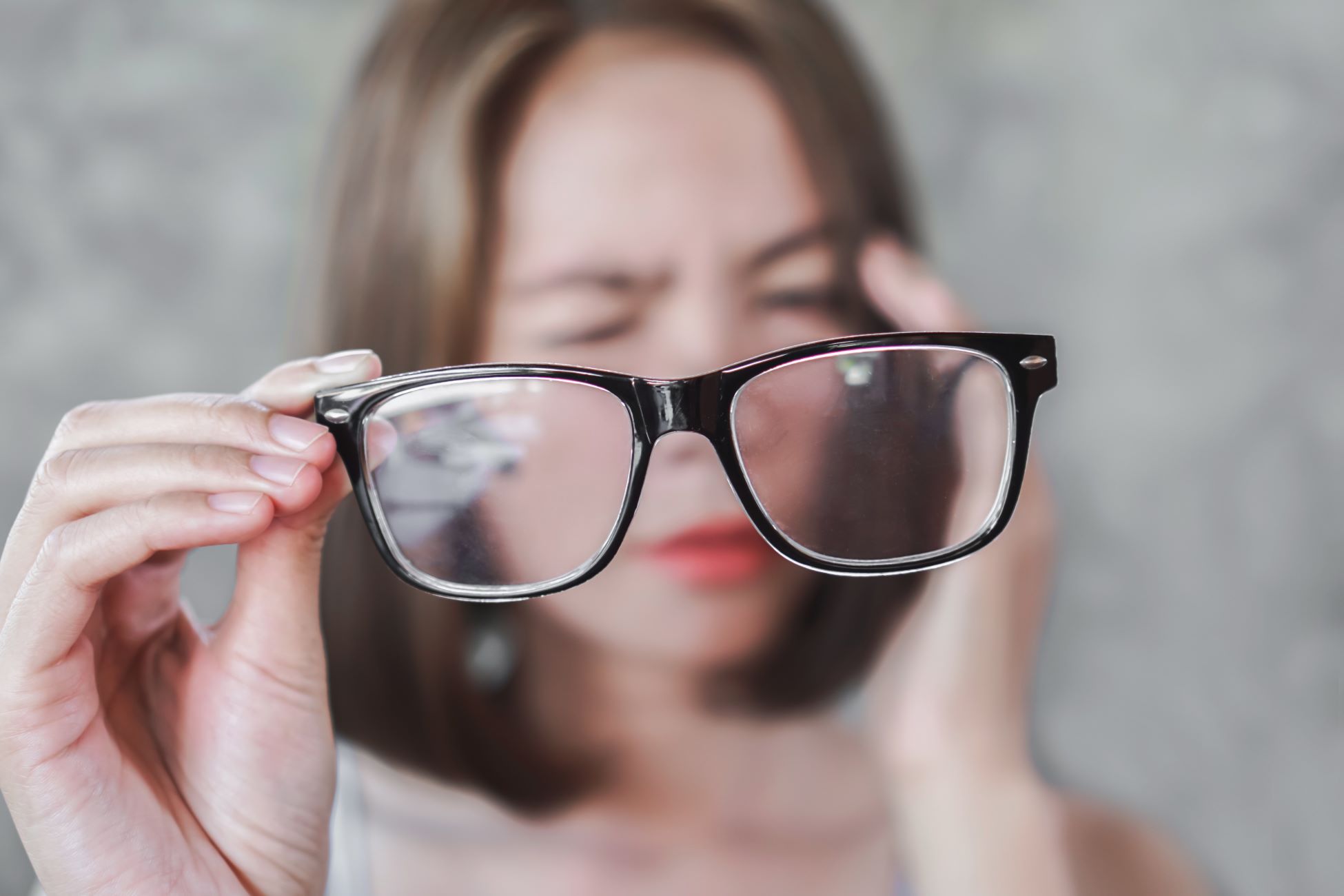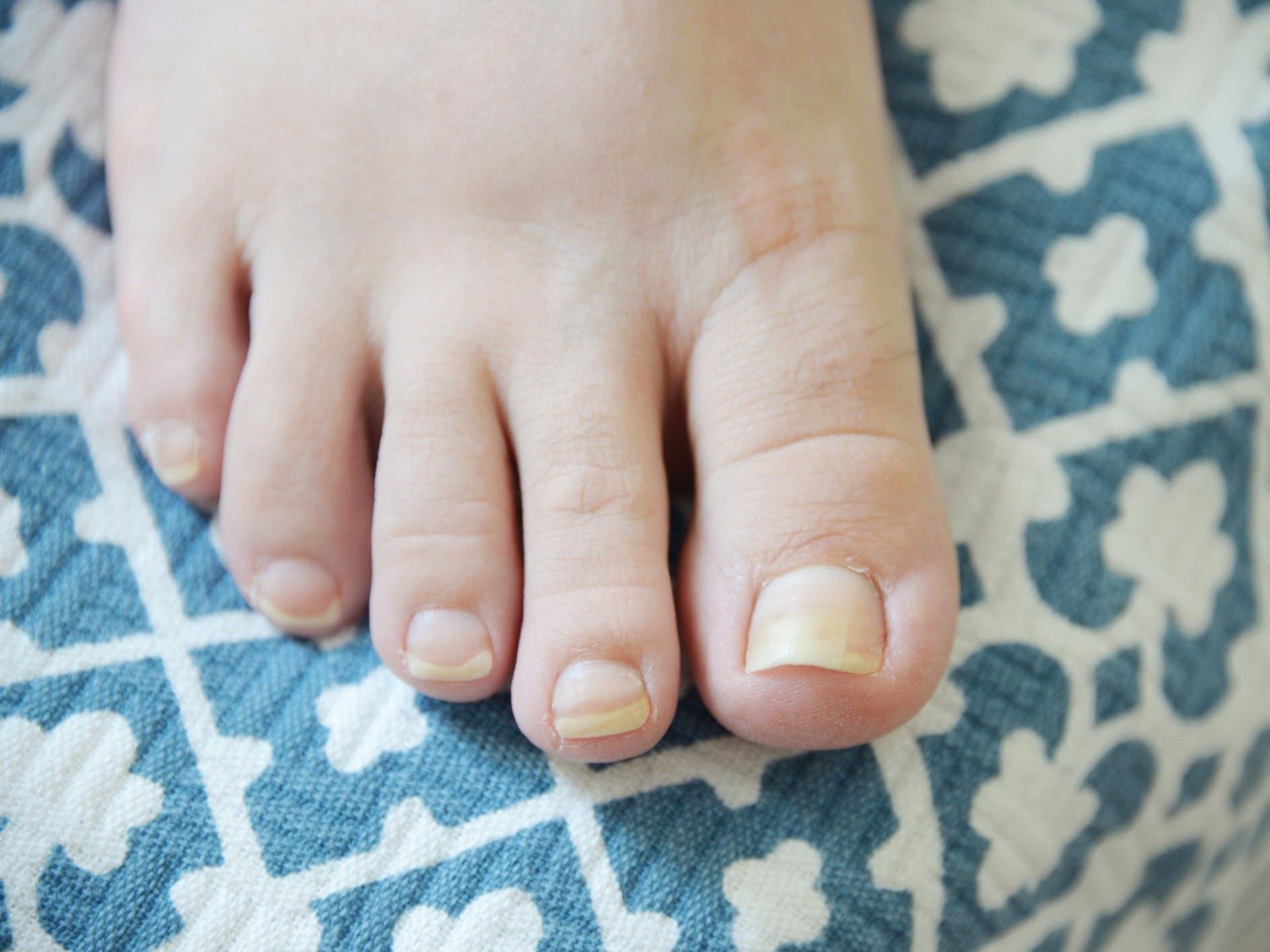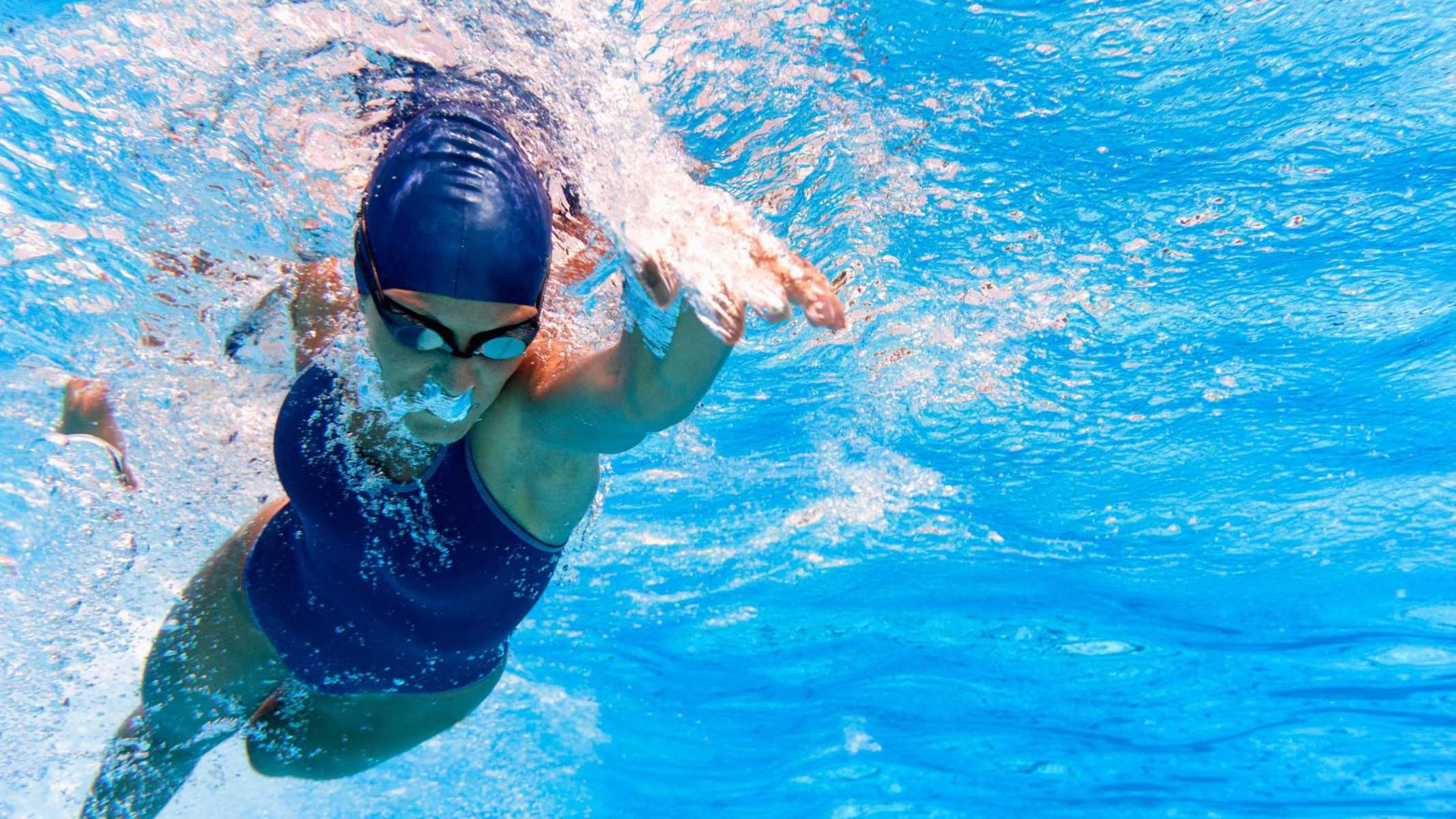Home>Health & Nutrition>Causes Of Blurry Vision While Running


Health & Nutrition
Causes Of Blurry Vision While Running
Published: March 2, 2024
Experiencing blurry vision while running? Learn about the health and nutrition factors that could be causing this issue and how to address it. Discover the potential causes and solutions now.
(Many of the links in this article redirect to a specific reviewed product. Your purchase of these products through affiliate links helps to generate commission for Therunningadvisor.com, at no extra cost. Learn more)
Table of Contents
Common Causes of Blurry Vision
Blurry vision while running can be attributed to various factors, ranging from temporary issues to underlying health conditions. Understanding these common causes is essential for maintaining optimal eye health and ensuring a clear vision during physical activities.
-
Dehydration: Inadequate hydration can lead to blurry vision during running. When the body lacks sufficient fluids, it affects the tear film on the surface of the eyes, leading to dryness and discomfort. This, in turn, can cause vision to become blurry, making it challenging to focus clearly on surroundings.
-
Poor Lighting Conditions: Running in environments with inadequate lighting can strain the eyes, resulting in blurry vision. Insufficient light can make it difficult for the eyes to adjust to the surroundings, leading to a decrease in visual acuity. Additionally, sudden changes in light intensity, such as transitioning from bright sunlight to shaded areas, can further impact vision clarity.
-
Eye Fatigue: Prolonged physical exertion, such as running, can contribute to eye fatigue, which may manifest as blurry vision. When the eyes are overworked, especially in combination with other factors like dehydration and poor lighting, it can lead to temporary visual disturbances.
-
Refractive Errors: Individuals with underlying refractive errors, such as nearsightedness, farsightedness, or astigmatism, may experience blurry vision while running. These conditions can cause light to focus improperly on the retina, leading to difficulties in seeing objects clearly, particularly during physical activities.
-
Blood Sugar Levels: Fluctuations in blood sugar levels, particularly in individuals with diabetes, can impact vision during running. High or low blood sugar levels can affect the shape and flexibility of the eye's lens, leading to changes in visual perception and potentially causing blurry vision.
Understanding these common causes of blurry vision while running is crucial for taking proactive measures to mitigate these factors and maintain optimal eye health. By addressing hydration, ensuring adequate lighting, managing eye fatigue, addressing refractive errors, and regulating blood sugar levels, individuals can work towards preserving clear vision during physical activities.
Read more: Possible Causes Of Knee Pain While Cycling
Impact of Dehydration on Vision
Dehydration can significantly impact vision, especially during physical activities such as running. When the body experiences a lack of proper hydration, it can lead to a range of adverse effects on the eyes, ultimately causing blurry vision and discomfort. Understanding the specific impact of dehydration on vision is crucial for individuals seeking to maintain optimal eye health during exercise.
The tear film covering the surface of the eyes plays a vital role in maintaining clear vision and overall eye comfort. However, when the body is dehydrated, this tear film can be compromised, leading to dryness and instability. As a result, the eyes may experience discomfort, redness, and a gritty sensation, ultimately contributing to blurry vision.
Furthermore, dehydration can lead to a decrease in tear production, causing the eyes to become dry and irritated. This can result in difficulties focusing on objects, particularly during physical activities like running, where the eyes are exposed to environmental elements such as wind and dust. The lack of sufficient moisture on the eye's surface can lead to visual disturbances, making it challenging to maintain clear and focused vision.
In addition to affecting the tear film, dehydration can also lead to overall eye fatigue. When the body lacks proper hydration, it can impact overall energy levels, including those of the eyes. As a result, individuals may experience increased eye strain and discomfort, further contributing to blurry vision during physical exertion.
It's important to note that the impact of dehydration on vision is not limited to just physical discomfort. Prolonged dehydration can lead to more severe eye issues, such as corneal damage and increased susceptibility to eye infections. These complications can exacerbate visual disturbances, making it essential to address dehydration to maintain optimal eye health during physical activities.
To mitigate the impact of dehydration on vision during running and other physical activities, it is crucial to prioritize adequate hydration. Ensuring that the body is well-hydrated before, during, and after exercise can help maintain the stability of the tear film, reduce eye fatigue, and promote overall visual comfort. By incorporating proper hydration practices into their routine, individuals can work towards preserving clear and focused vision, even during strenuous physical activities.
Understanding the significant impact of dehydration on vision underscores the importance of prioritizing hydration as a fundamental aspect of maintaining optimal eye health, particularly during activities like running. By addressing dehydration, individuals can take proactive measures to support clear vision and overall visual comfort, enhancing their overall exercise experience.
Effects of Poor Lighting on Vision
Poor lighting conditions can have a profound impact on vision, particularly during physical activities such as running. When individuals engage in running in environments with inadequate lighting, it can significantly strain their eyes and lead to a range of visual disturbances. Understanding the specific effects of poor lighting on vision is crucial for individuals seeking to maintain optimal eye health and ensure clear vision during exercise.
Insufficient lighting can impede the eyes' ability to effectively adjust to the surrounding environment, leading to decreased visual acuity. When the eyes are exposed to dim or uneven lighting, it becomes challenging for them to accurately perceive objects and obstacles, ultimately resulting in blurry vision. This can pose significant safety risks for individuals engaging in activities like running, where clear vision is essential for navigating their surroundings.
Moreover, sudden changes in light intensity can further exacerbate visual disturbances. For instance, transitioning from bright sunlight to shaded areas or encountering rapidly fluctuating light conditions can cause the eyes to struggle in adapting, leading to temporary blurriness and reduced visual clarity. These abrupt changes in lighting can create visual discomfort and hinder individuals' ability to maintain a clear focus while running.
In addition to impacting immediate visual perception, prolonged exposure to poor lighting during physical activities can contribute to eye fatigue. The eyes must work harder to compensate for inadequate lighting, leading to increased strain and discomfort. This can manifest as symptoms of eye fatigue, including tiredness, dryness, and difficulty focusing, ultimately resulting in blurry vision during and after running.
Furthermore, poor lighting conditions can also affect depth perception and contrast sensitivity, crucial visual functions for accurately perceiving the environment during physical activities. When these visual functions are compromised due to inadequate lighting, individuals may struggle to discern objects, judge distances, and identify potential hazards, further increasing the risk of blurry vision and potential accidents during running.
To mitigate the effects of poor lighting on vision during running, it is essential to prioritize running in well-lit environments whenever possible. Ensuring adequate lighting along running routes, especially during low-light conditions, can significantly enhance visual clarity and reduce the likelihood of experiencing blurry vision. Additionally, wearing appropriate eyewear, such as sunglasses with UV protection, can help mitigate the impact of sudden changes in light intensity, promoting more consistent visual acuity during running.
Understanding the significant effects of poor lighting on vision underscores the importance of creating visually supportive environments for physical activities like running. By addressing poor lighting conditions and taking proactive measures to enhance visual comfort, individuals can work towards maintaining clear and focused vision, ultimately improving their overall running experience.
Role of Eye Fatigue in Blurry Vision
Eye fatigue plays a pivotal role in contributing to blurry vision, particularly during activities that demand prolonged visual focus, such as running. Understanding the intricate relationship between eye fatigue and blurry vision is essential for individuals seeking to maintain optimal eye health and visual acuity during physical exertion.
Prolonged physical activities, including running, can lead to increased strain on the eyes, ultimately resulting in eye fatigue. When the eyes are overworked, especially in combination with other factors such as dehydration and poor lighting, it can lead to temporary visual disturbances, including blurry vision. The sustained effort required to maintain focus during running can exacerbate eye fatigue, impacting the eyes' ability to sustain clear vision.
Furthermore, the repetitive motion and impact associated with running can further contribute to eye fatigue. The constant jarring and movement can strain the eye muscles, leading to increased tiredness and discomfort. As a result, individuals may experience difficulties in maintaining sharp and focused vision, ultimately leading to blurry or distorted visual perception.
In addition to physical strain, mental fatigue can also play a significant role in contributing to eye fatigue and subsequent blurry vision. Engaging in prolonged physical activities can lead to overall fatigue, impacting cognitive functions and visual processing. This mental exhaustion can directly affect the eyes, leading to decreased visual acuity and difficulties in maintaining clear vision during running.
Moreover, environmental factors, such as exposure to wind, dust, and allergens during running, can further exacerbate eye fatigue. These elements can irritate the eyes, leading to increased discomfort and strain, ultimately contributing to visual disturbances and blurry vision.
To mitigate the role of eye fatigue in blurry vision during running, individuals can incorporate strategies to alleviate eye strain and promote visual comfort. Taking regular breaks during extended physical activities, such as running, can help alleviate eye fatigue and reduce the likelihood of experiencing blurry vision. Additionally, practicing eye relaxation exercises and maintaining proper hydration can help alleviate strain and support clear vision during running.
Understanding the significant role of eye fatigue in contributing to blurry vision underscores the importance of prioritizing visual comfort during physical activities. By addressing eye fatigue and implementing proactive measures to support eye health, individuals can work towards maintaining clear and focused vision, ultimately enhancing their overall running experience.
Influence of Refractive Errors on Vision
Refractive errors, encompassing conditions such as nearsightedness (myopia), farsightedness (hyperopia), and astigmatism, can significantly impact vision during physical activities like running. These common eye conditions result from irregularities in the eye's shape, leading to difficulties in focusing light onto the retina, consequently affecting visual clarity.
During running, individuals with refractive errors may experience challenges in maintaining clear vision due to the inherent optical limitations associated with these conditions. Nearsighted individuals may struggle with focusing on distant objects, leading to blurred vision when trying to perceive surroundings during running. Conversely, those with farsightedness may encounter difficulties in focusing on nearby objects, potentially impacting their ability to navigate obstacles effectively. Astigmatism, characterized by irregular curvature of the cornea or lens, can lead to distorted or blurred vision at various distances, further complicating visual perception during physical activities.
Moreover, the impact of refractive errors on vision during running is exacerbated by the dynamic nature of the activity. The constant motion and varying distances of objects in the environment can pose challenges for individuals with refractive errors, as their eyes may struggle to adjust and focus efficiently, leading to intermittent blurriness and visual discomfort.
Furthermore, the physical exertion associated with running can contribute to increased eye strain for individuals with refractive errors. The additional effort required to compensate for the optical limitations imposed by these conditions can lead to heightened fatigue and discomfort, potentially exacerbating visual disturbances and blurry vision.
To address the influence of refractive errors on vision during running, individuals can benefit from corrective measures such as prescription eyewear or contact lenses tailored to their specific condition. These optical aids can help compensate for the refractive errors, enabling individuals to achieve clearer vision and enhanced visual acuity during running. Additionally, undergoing regular eye examinations to monitor and manage refractive errors is essential for ensuring optimal visual performance during physical activities.
Understanding the influence of refractive errors on vision underscores the importance of proactive management and support for individuals with these conditions. By addressing refractive errors through appropriate corrective measures and seeking professional guidance, individuals can work towards maintaining clear and focused vision, ultimately enhancing their overall running experience.
Impact of Blood Sugar Levels on Vision
Blood sugar levels play a crucial role in influencing vision, particularly during physical activities like running. The intricate connection between blood sugar levels and vision stems from the profound impact of glucose regulation on the eye's physiological processes. Understanding how fluctuations in blood sugar levels can affect vision is essential for individuals seeking to maintain optimal eye health and visual acuity during exercise.
High blood sugar levels, often associated with conditions such as diabetes, can lead to various ocular complications that directly impact vision. One of the primary effects of elevated blood sugar levels is the alteration of the eye's lens flexibility. When blood sugar levels are consistently high, the lens within the eye may swell, leading to changes in its shape and refractive properties. This can result in difficulties in focusing, leading to blurred vision and challenges in perceiving surroundings clearly during running and other physical activities.
Conversely, low blood sugar levels can also have detrimental effects on vision. When blood sugar levels drop below normal ranges, individuals may experience visual disturbances, including blurriness and difficulty in maintaining clear vision. This can be attributed to the reduced availability of glucose, the primary energy source for the eye's cells. As a result, the visual processing and signaling mechanisms within the eye may be compromised, leading to temporary visual impairments.
Furthermore, the impact of blood sugar levels on vision during running is compounded by the additional stress placed on the body during physical exertion. The metabolic demands of running can further exacerbate the effects of fluctuating blood sugar levels on visual function, potentially leading to more pronounced visual disturbances.
To mitigate the impact of blood sugar levels on vision during running, individuals with diabetes or those prone to blood sugar fluctuations can benefit from proactive management strategies. This includes adhering to a well-balanced diet, monitoring blood sugar levels regularly, and following prescribed medication regimens to maintain optimal glucose control. By effectively managing blood sugar levels, individuals can work towards preserving clear and focused vision, ultimately enhancing their overall running experience.
Understanding the intricate relationship between blood sugar levels and vision underscores the importance of proactive measures to support eye health, particularly during physical activities. By addressing blood sugar fluctuations and prioritizing optimal glucose control, individuals can strive to maintain clear and focused vision, ultimately improving their overall running experience.















